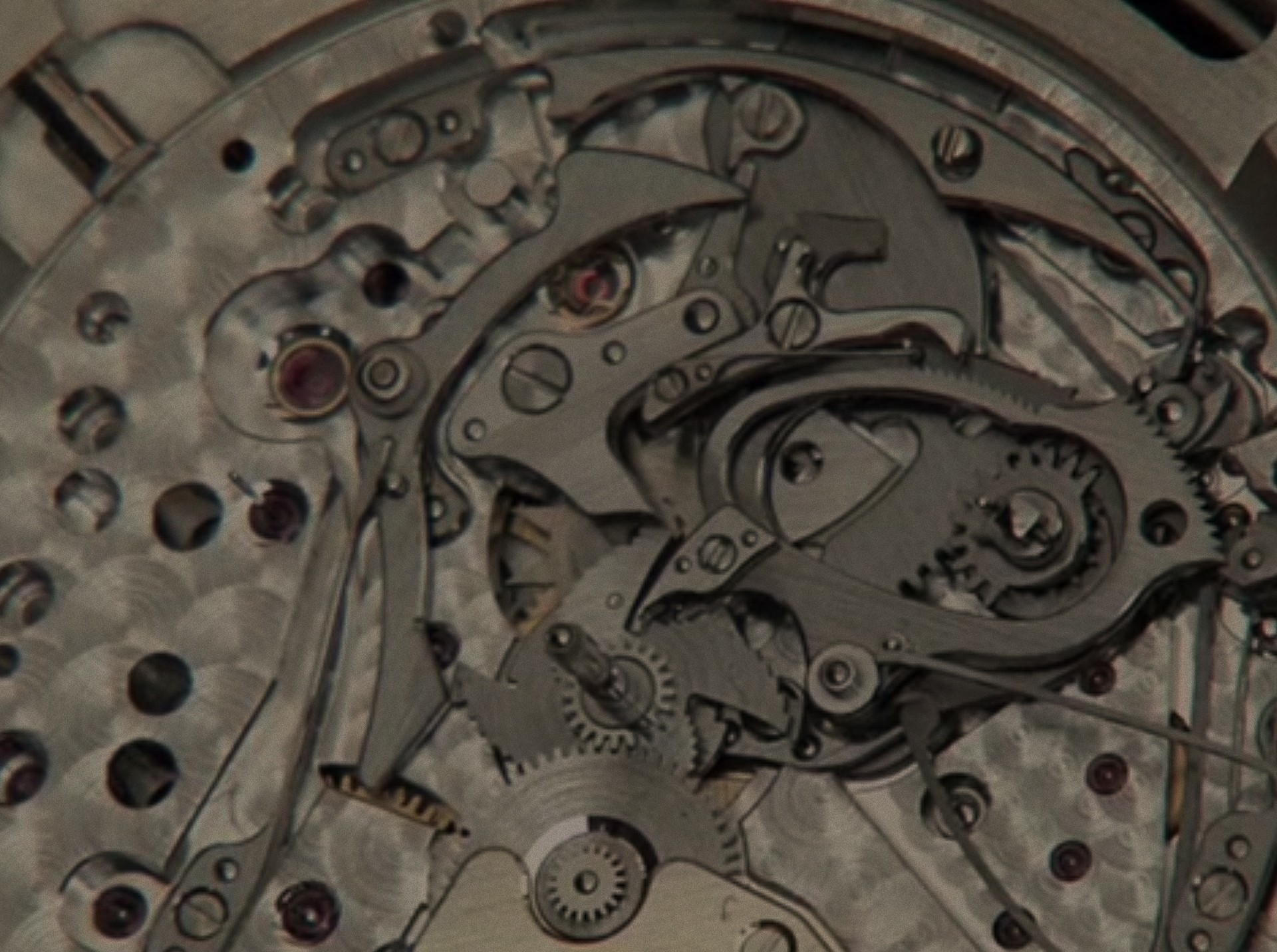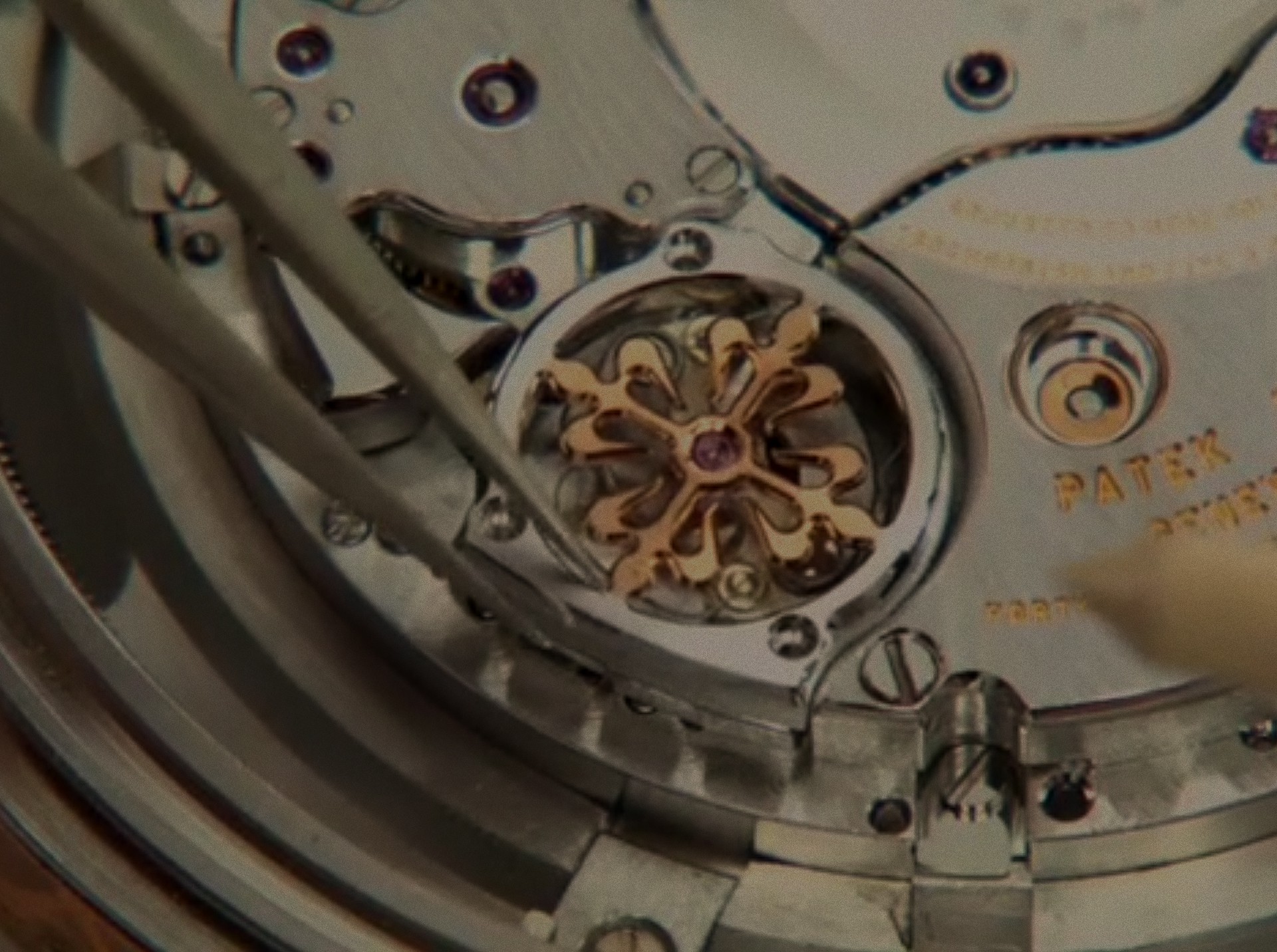2 - Bringing a Minute Repeater to life
There can be no short cuts in the assembly of the finest minute repeater.
Most watchmakers consider the minute repeater the ultimate single complication in watchmaking. Every watch is unique and demands a perfect marriage of technological innovation and human touch. Only when all the components are optimally finished, assembled and set can precision striking be delivered and the perfect sound created. So it is that every minute repeater produced by Patek Philippe is personally auditioned by Mr. Stern. Upon his approval, the chime is then recorded for the Patek Philippe archives for posterity.


The Master Watchmaker
Before the gongs can produce the purest sound possible, they must be set in the watch and then perfectly tuned in their final position. As is so often the case in the art of watchmaking, the success or failure of this venture ultimately depends on the steady hand, the patience and the skill of a master craftsman.
At Patek Philippe it is the master watchmakers who are responsible for the inimitable gong tones of the precious timekeeping instruments. Their attentive eyes project the tranquility and wisdom required for this work in the microcosm of tiny wheels, levers, springs and screws.
When they attach the gongs to the movement, armed with a magnifying glass, a pair of tweezers and a precision screwdriver, it becomes clear that watchmaking tolerates no impatience whatsoever. Before they can correctly tune the gongs, they must secure them to the movement, activate the strike hammers and rely on their finely trained ear. If the tone is less than perfect, the springs are removed again. A fraction of the metal is removed, the gongs are bent by a minuscule amount and are then re-installed to be tested anew with a succession of hammer strikes.
This process of attaching, striking, disassembling and resetting the springs can go on for days or even weeks. It is not finished until the master watchmaker sets aside his tools.
Of course, this is just one of many tests and trials that this micromechanical miracle will undergo before it makes it onto the wrist of its eventual owner.
Striking the gong
Gongs have replaced the bell, which only had a single tone of vibration and required more space. Gongs are tricky to tune and require a fine ear and subtle hands to reveal their true character. There are two gongs in most minute repeaters which must be hand adjusted by a skilled watchmaker in order to be in complete harmonic resonance. The striking strength of each hammer must also be individually adjusted as not to overpower the gongs, sending them into overload. Sensitivity of the hand and ear are of major importance at this critical stage of bringing a minute repeater to life.
As with any striking watch, something must strike the gongs; and in this case, it is the hammers. As there are generally two gongs in a typical minute repeater, there are two hammers. When developing the striking mechanism the weight and the position of each hammer must be perfectly adapted to the corresponding gong. Furthermore, and possibly more important, the strength of the spring that controls each hammer must be exactly proportional to the hammer weight, otherwise the resulting sound will be blurred - either too weak or too strong. Again, this tuning of the hammer springs by a master watchmaker is a major contributory factor to the overall quality of a fine minute repeater.
The Challenge
A wristwatch can only accommodate small gongs, called classic gongs which pose a real challenge when striving for a rich and convincing sound. And though the acoustic quality of Patek Philippe wristwatches with minute repeaters is already legendary, in early 2000 the company - developed a new striking mechanism that offers a different acoustic experience; the ‘cathedral’ gong. The cathedral gong differs from classic gongs in terms of its extraordinary length. Cathedral gongs wrap around the movement with a length equivalent to nearly two circumferences and are thus twice as long as classic ones. The result is a rich tone with a particularly long reverberation.
However, using this gong presents considerable technical challenges. Because the gongs are only secured at one end, it is very difficult to drape them around the movement twice without them touching the case, the movement, or each other - thereby adversely affecting the sound. The problem has been overcome with a helical arrangement of the two gongs and with recesses in the case. This design provides enough ‘air’ for the two cathedral gongs so they can vibrate freely along their full length and generate a clear and audible reverberating sound.
The unusual length of the cathedral gong is not the sole reason for its rich sound: the steel alloy used to create all Patek Philippe gongs is in fact crucial to their particular resonance. Patek Philippe specialists experimented for years to find this ideal hybrid metal.
Delivering the perfect acoustic experience also depends on the rhythm of the chiming sequence. The speed at which the hammers hit the gongs is controlled by a small centrifugal governor, which assures that the gongs are struck in uniform succession rather than in a hurried sequence, and contrary to other classic systems the centrifugal governor is a cut above the rest thanks to its extremely silent operation and control stability.
Rediscovering a lost art
Historically, the work of the production of gongs was performed by a handful of specialized artisans. This meant that Patek Philippe had to carry out extensive research to learn these skills and develop the practices necessary to reaffirm this craft.
Indeed, in an era that knew no retirement benefits, gongmakers considered their experience and metallurgical knowledge to be a form of insurance that would allow them to stay in the industry for as long as they were able to practice their craft. As a result, they kept no written records of their production skills that could have been handed down to future generations. Although this rare horological craft became to all intents and purposes extinct in the early 1970s, Patek Philippe has reconstructed and refined the expertise and methods of gong production, consigning a wealth of information to posterity that would otherwise have been lost.
